Biotechnology has revolutionized the way we approach modern science, especially in the field of genetics and physiology. The second edition of the book “Biotechnology” by David P. Clark delves deep into the molecular basis of biotechnology, providing a comprehensive overview of key concepts and applications in the field. This Test Bank for the book offers valuable resources for students and instructors to assess and enhance their understanding of the subject matter.
### Key Features of the Book:
– **Modern Biotechnology:** The book focuses on the latest trends in biotechnology with a molecular foundation, making it relevant to current advancements in the field.
– **Clear Illustrations:** Featuring vivid illustrations, the book simplifies complex topics and ideas, making them easier to comprehend for readers.
– **Accessible Language:** Written in a clear and concise manner, the book avoids technical jargon, making it accessible to a wide range of readers.
– **Supplements Package:** The book comes with a complete supplements package, including study guides, research articles, and resources for instructors.
### Chapters Covered in the Book:
1. **Chapter 1: Fundamentals of Biotechnology**
2. **Chapter 2: DNA, RNA, and Protein**
3. **Chapter 3: Recombinant DNA Technology**
4. **Chapter 4: DNA Synthesis In Vivo and In Vitro**
5. **Chapter 5: RNA-Based Technologies**
6. **Chapter 6: Immune Technology**
7. **Chapter 7: Nanobiotechnology**
8. **Chapter 8: Genomics and Gene Expression**
9. **Chapter 9: Proteomics**
10. **Chapter 10: Recombinant Proteins**
From understanding the basics of biotechnology to exploring advanced topics such as genomics, proteomics, and nanobiotechnology, this book covers a wide range of subjects essential for students and researchers in the field.
Whether you are a student looking to expand your knowledge of biotechnology or an instructor seeking additional resources for teaching, the Test Bank for “Biotechnology 2nd Edition” by David P. Clark is a valuable tool to enhance your learning experience.
For those interested in delving deeper into the world of biotechnology, this book provides a solid foundation for understanding the scientific principles and applications that drive this fascinating field.
### FAQ
**Q: Is the Test Bank for “Biotechnology 2nd Edition” suitable for self-study?**
A: While the Test Bank is primarily designed for instructors to assess student understanding, it can also be a useful resource for self-assessment and practice for students.
**Q: Are the questions in the Test Bank aligned with the content of the book?**
A: Yes, the questions in the Test Bank are directly related to the content covered in each chapter of the book, ensuring a comprehensive review of the material.
**Q: Can instructors customize the questions from the Test Bank for exams and quizzes?**
A: Instructors have the flexibility to tailor the questions from the Test Bank to suit their teaching objectives and assessment needs.
### Conclusion
“Biotechnology 2nd Edition” by David P. Clark, along with its Test Bank, offers a valuable resource for students and instructors seeking to deepen their understanding of biotechnology. With its comprehensive coverage of key concepts and engaging content, this book serves as a valuable tool for anyone interested in exploring the fascinating world of biotechnology.Biotechnology is a field of science that involves the use of biological systems and organisms to develop products and technologies. It encompasses a wide range of topics such as genetic engineering, protein expression, environmental biotechnology, synthetic biology, transgenic plants and animals, gene therapy, cloning, cancer research, viral infections, forensic molecular biology, and bioethics.
Chapter 10 of the book focuses on Protein Expression and Chapter 11 on Protein Engineering. These chapters delve into the techniques and strategies used to produce proteins, modify their structures, and enhance their functionalities. From designing expression vectors to optimizing protein stability and secretion, these chapters provide valuable insights into the world of protein engineering.
Moving on to Chapter 12 on Environmental Biotechnology, readers explore how biotechnological approaches are being used to address environmental challenges. From metagenomics to biofuels and microbial fuel cells, this chapter highlights the role of biotechnology in environmental conservation and sustainable development.
Chapter 13 discusses Synthetic Biology, a field that combines principles of biology and engineering to design and construct biological systems for various applications. From biofuels to bioplastics, this chapter showcases the innovative ways in which synthetic biology is shaping the future of biotechnology.
In Chapter 14, the book explores the intersection of biology and technology in fields such as robotics, cyborgs, and artificial intelligence. From radio-controlled genes to biorefining of fossil fuels, this chapter takes readers on a journey through the cutting-edge advancements in the field of biotechnology.
The book also covers topics such as Transgenic Plants and Animals, Inherited Defects and Gene Therapy, Cloning and Stem Cells, Cancer research, Aging and Apoptosis, Viral and Prion Infections, Biological Warfare, Forensic Molecular Biology, and Bioethics in Biotechnology.
With each chapter offering a unique perspective on the applications and implications of biotechnology, readers gain a comprehensive understanding of how this exciting field is shaping the future of science and technology.
FAQs
1. What is biotechnology?
Biotechnology is a field of science that involves the use of biological systems and organisms to develop products and technologies.
2. What are some of the topics covered in the book?
The book covers a wide range of topics including protein expression, environmental biotechnology, synthetic biology, transgenic plants and animals, gene therapy, cancer research, viral infections, forensic molecular biology, and bioethics in biotechnology.
3. How does protein engineering play a role in biotechnology?
Protein engineering involves modifying protein structures to enhance their functionalities for various applications in biotechnology.
4. What is synthetic biology?
Synthetic biology combines principles of biology and engineering to design and construct biological systems for diverse applications such as biofuels and bioplastics.
Conclusion
The field of biotechnology is broad and dynamic, with applications ranging from healthcare and agriculture to environmental conservation and forensics. The book offers a comprehensive overview of various topics in biotechnology, providing valuable insights into the latest advancements and innovations in the field. As biotechnology continues to evolve, it will undoubtedly play a crucial role in addressing global challenges and shaping the future of science and technology.David Clark, a former professor at Southern Illinois Faculty, has had a remarkable career in the field of Molecular Biology and Bacterial Physiology. He dedicated over 25 years to research funded by prestigious institutions such as the U.S. Department of Energy. His work on the Regulation of Alcohol Fermentation in E. coli and genetically altered bacteria for coal desulfurization has contributed significantly to scientific knowledge. Alongside his research, Clark has mentored numerous students and authored several textbooks, including the popular “Germs, Genes, & Civilization: How Epidemics Shaped Who We Are Today.”
Nanette J. Pazdernik, Ph.D., a co-author with Dr. David Clark, has made significant contributions to the field of Biotechnology and Molecular Biology. Her academic journey includes teaching roles at various educational institutions and a strong research background. Pazdernik’s expertise in genetics, cellular biology, and developmental biology has been recognized through prestigious awards and accolades. She continues to explore the intricate world of molecular biology, focusing on areas such as stem cell preservation and signal transduction pathways.
Together, David Clark and Nanette J. Pazdernik have co-authored textbooks that have become essential resources for students and professionals in the field of molecular biology. Their dedication to education and research has left a lasting impact on the scientific community.
—
### FAQ
#### 1. What are Test Banks and Solution Manuals?
Test Banks are resources used by instructors to create exams and tests for students. They contain a collection of exam questions and answers.
#### 2. How can Test Banks and Solution Manuals help students?
Test Banks and Solution Manuals can aid students in understanding complex topics, preparing for exams, and improving their overall academic performance.
#### 3. Are Test Banks and Solution Manuals legal?
Test Banks and Solution Manuals are legal resources created by publishers or authors to supplement educational materials and aid in the learning process.
#### 4. Where can I find Test Banks and Solution Manuals?
Test Banks and Solution Manuals can be purchased from educational publishers, online bookstores, or academic resource websites.
—
In conclusion, the contributions of David Clark and Nanette J. Pazdernik to the field of Molecular Biology have been significant and impactful. Their work in research, education, and textbook authoring has enriched the scientific community and inspired future generations of biologists. Students and professionals alike continue to benefit from their expertise and dedication to advancing the field of molecular biology.


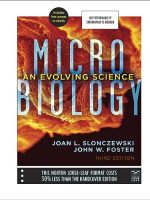

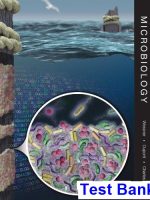
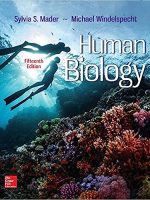
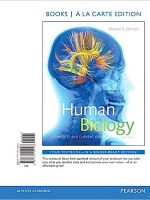
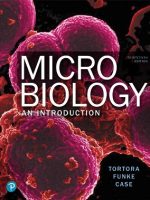
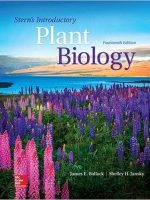
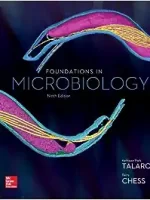
Be the first to review “Biotechnology 2nd Edition by David P. Clark – Test Bank”